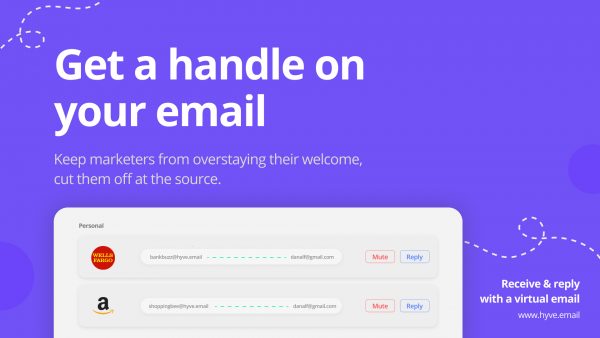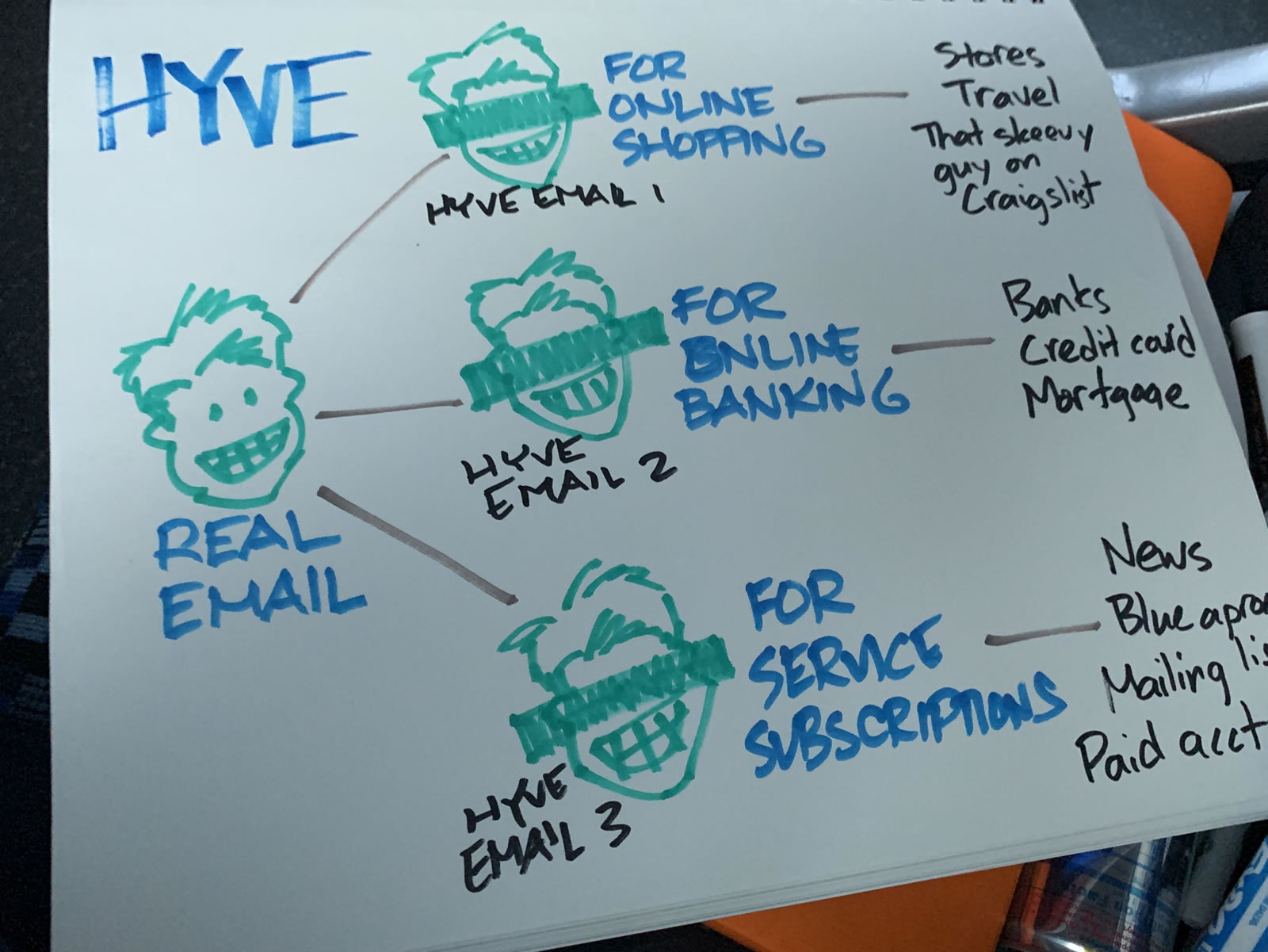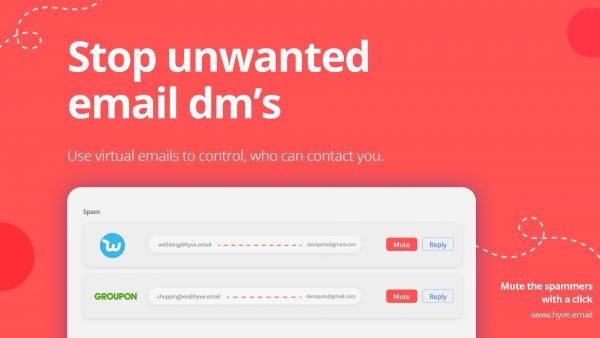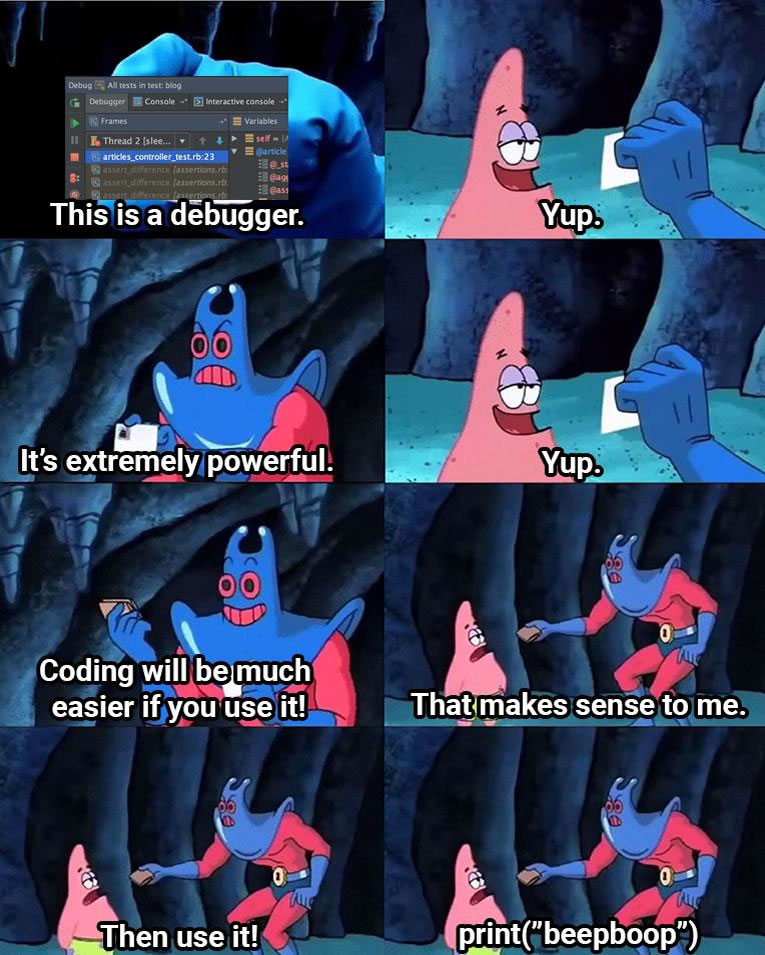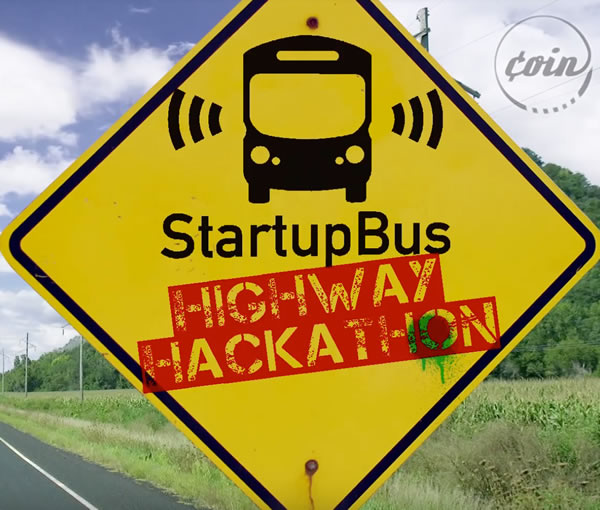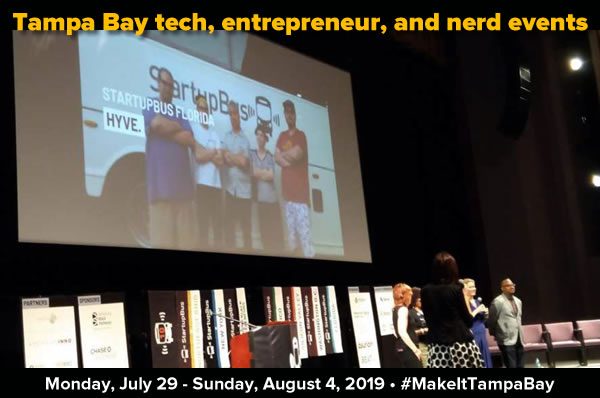
Every week, I compile a list of events for developers, technologists, tech entrepreneurs, and nerds in and around the Tampa Bay area. We’ve got a lot of events going on this week, and here they are!
This weekly list is posted as a voluntary service to the Tampa tech community. With the notable exceptions of Tampa iOS Meetup and Coders, Creatives and Craft Beer — both of which I run — most of this information comes from Meetup.com, EventBrite, and other local event announcement sites. I can’t guarantee the accuracy of the dates and times listed here; if you want to be absolutely sure that the event you’re interested in is actually taking place, please contact the organizers!
Monday, July 29
- Public Speakers Community of Tampa Bay — How to Add 6 Figures to Your Business Using Public Speaking – Tampa @ Tampa Innovation Partnership, 6:00 PM to 8:00 PM
- Card Games – Tampa — Tampa Card Games Kickoff take 2! @ Miller’s Ale House – Tampa USF, 6:00 PM to 9:00 PM
- America’s TriviAddicition — ROOKIES SPORTS BAR – SPRING HILL – SPECIAL THE OFFICE THEMED TRIVIA !!! @ 6:00 PM to 8:00 PM
- Florida Center for Creative Photography — FREE Lightroom Class at Ross Norton Community Center — Class 8 of 8 @ Ross Norton Recreation Complex, 6:30 PM to 8:30 PM
- Suncoast Developers Guild Jr: Intro to HTML/CSS (ages 8-12) @ Suncoast Developers Guild, 6:30 PM to 8:30 PM
- Brandon – Sarasota – Bradenton Trivia & Quiz Meetup — Off the Wagon Kitchen & Brewery Smartphone Trivia Game Show @ 6:30 PM to 8:00 PM
- Cool ‘n Confident Toastmasters @ SPC – St. Petersburg/Gibbs Campus, 6:30 PM to 8:00 PM
- Tampa Bay Japanese Language Classes — *New!* Beginner Japanese Classes in St. Pete/Pinellas Park: Lesson 16 @ Kitchen Table Games, 7:00 PM to 9:00 PM
- America’s TriviAddiction — ROOKIES SPORTS BAR – SPRING HILL – SPECIAL THE OFFICE THEMED TRIVIA !!!
- South Tampa Toastmasters @ Unity of Tampa, 7:00 PM to 8:15 PM
- Aspiring Authors — Free Social Media & Your Book Workshop @ Office Service 101, 7:00 PM to 9:00 PM
Tuesday, July 30
- Business Game Changers Group — Leads and Coffee @ Belleair Coffee Company, Belleair Coffee Company
- Tampa Bay Professionals (IT, Sales, HR & More) — SALES PROS – Dale Carnegie Sales Training 3-Day Meetup @ Presidents Plaza – Dale Carnegie Training Center, Tuesday, July 30, 2019, 8:30 AM to Thursday, August 1, 2019, 5:00 PM
- Young Professionals of Tampa Bay Networking Group — Carrollwood Networking Lunch McAllisters Deli @ McAlister’s Deli, 11:30 AM to 1:00 PM
- Westshore Toastmasters @ FIVE Labs, 12:00 PM to 1:00 PM
- Brandon Boardgamers — Tuesday Night Gaming @ Cool Stuff Games, 5:00 PM to 8:00 PM
- Geekocracy! — Once Upon a Time in Hollywood @ AMC Veterans 24, 5:45 PM to 7:45 PM
- Tampa Bay Power BI User Group — Messy to Professional, DAX Lessons, Group Rapid Dashboard Session @ CCG Analytics Solutions & Services, 6:00 PM to 8:00 PM
- Pinellas Business Crowd — Marketing – Inbound, Outbound, and Expectations @ Office Services 101, LLC, 6:00 PM to 7:30 PM
- Tampa Bay Career Transition Group — Advanced LinkedIn Workshop and Networking @ The Undercroft, 6:00 PM to 8:00 PM
- Florida Center for Creative Photography — Meet & Greet at O’Keefe’s Family Restaurant @ O’Keefe’s Family Restaurant, 6:00 PM to 7:00 PM
- Weekly Open Make Night @ Tampa Hackerspace, 6:00 PM to 10:00 PM
- Tampa Small Business Roundtable — South Tampa small business roundtable @ CoCreativ South Tampa, 6:30 PM to 7:30 PM
- West Pasco Toastmasters Club #2824 — Weekly Meeting @ West Pasco Board of Realtors, 6:30 PM to 8:00 PM
- Game Club Tampa Meetup — Tuesday Nite Roleplayers (RPGs) [Full] @ Grand Arena of Mind Expansion, 6:30 PM to 10:30 PM
- America’s TriviAddiction — WESTSHORE PIZZA – BELLEAIR BLUFFS – LIVE TEAM TRIVIA !!! @ 6:30 PM to 8:30 PM
- Portkey to Magic — Harry Potter Trivia Night @ Jacks London Grill, 7:00 PM to 9:00 PM
- Sketch – Tampa Bay — Sketch Print Design @ Tampa Bay Wave, 7:00 PM to 8:30 PM
- St. Pete Beers ‘n Board Games Meetup for Young Adults @ Flying Boat Brewing Company, 7:00 PM to 10:00 PM
- Tampa Bay Blockchain Group — Trading Tuesday! @ Tampa Bay Wave, 7:00 PM to 9:00 PM
- America’s TriviAddiction — DAIQUIRI SHAK RAW BAR & GRILL – MADEIRA BEACH – LIVE TEAM TRIVIA @ 8:00 PM to 10:00 PM
Wednesday, July 31
- Young Professionals of Tampa Bay Networking Group — Downtown St Pete Networking at the Hangar~ Wednesday Mornings @ The Hangar Restaurant & Flight Lounge, 7:30 AM to 9:00 AM
- Young Professionals of Tampa Bay Networking Group — Bernini of Ybor Lunch Networking @ Bernini (innovative italian cuisine), 11:30 AM to 1:00 PM
- Sarasota Web Development Meetup Group — Lunch Hour Meetup @ Maharaja Restaurant, 12:00 PM to 1:00 PM
- IIBA Tampa Bay — Create Value & Love What You Do @ 12:00 PM to 1:00 PM
- Speakers Circle Toastmasters @ Fort Brooke Parking Garage 3rd Floor meeting area, 12:00 PM to 1:00 PM
- Gulf Coast GIS User Group — Social @ Urban Brew and BBQ @ 2601 Central Ave, 5:00 PM to 8:00 PM
- Florida Southern College Toastmasters – 4615* — Florida Southern College, 5:00 PM to 6:00 PM
- Tampa Bay Innovation Community — Introduction Networking Happy Hour! @ 5:00 PM to 7:00 PM
- Tampa Bay Agile — Women In Agile (WIA): 11 Ways to Create Inclusive Conversations @ Microsoft, 6:00 PM to 8:00 PM
- The Sophisticated Investor @ Centre Club – Tampa, 6:00 PM to 9:00 PM
- Free Crash Course – Intro to Blazor @ Suncoast Developers Guild, 6:30 PM to 8:30 PM
- Learn to Code | Thinkful Tampa — Intro to Data Science: Predictive Modeling @ Tampa Bay Wave, 6:30 PM to 8:00 PM
- Code Katas — Let’s Do Some Fun Code Challenges! @ PROforma, 7:00 PM to 9:00 PM
- Carrollwood Toastmasters – Peak Performance Strategy with Anthony DeMario! @ Jimmie B. Keel Regional Library, 7:00 PM to 8:30 PM
- Nerdbrew Events — Games & Grog @ Peabody’s, 7:00 PM to 11:00 PM
- Cryptocurrency Tampa Meetup — Bitcoin/Cryptocurrency Meetup: Networking, News, Q&A @ Coastal Cantina and Grill, 7:00 PM to 9:00 PM
Thursday, August 1
- Girlfriends&Coffee Networking Group @ Belleair Coffee Company, 9:30 AM to 11:00 AM
- Tampa# – C# and .NET — Coffee & Code @ Pour House at Grand Central, 11:15 AM to 1:15 PM
- DefCon813 — Happy Hour with GuidePoint, Forescout and Symantec at 3 Daughters Brewery @ 5:30 PM to 7:30 PM
- Brandon Boardgamers — Let’s Game on Thursdays @ Panera Bread, 5:30 PM to 9:30 PM
- Sarasota Bitcoin Meetup @ South Manatee Branch Library. 6:00 PM to 7:00 PM
- Tech on Tap!! @ Brick House Tavern + Tap, 6:00 PM to 9:00 PM
- Brandon and Seffner area D&D Meetup — 1st ed AD&D Barrowmaze Campaign @ 6:00 PM to 10:00 PM
- Critical Hit Games — D&D Adventurer’s League: Level 5-10 Table @ Critical Hit Games, 6:00 PM to 11:00 PM
- America’s TriviAddiction — CAPTAIN’S CORNER – BROOKSVILLE – LIVE TEAM TRIVIA !!! @ 6:00 PM to 8:00 PM
- America’s TriviAddiction — CRESCENT OAKS COUNTRY CLUB – TARPON SPRINGS – LIVE TEAM TRIVIA !!! @ 6:00 PM to 8:00 PM
- BarCamp Tampa Bay — TechNova Volunteer Night at 81Bay Brewing @ 81Bay Brewing Company, 6:15 PM to 7:45 PM
- WordPress Tampa — Creating Forms that Convert: Advanced Gravity Forms @ Charles J. Fendig Public Library, 6:30 PM to 8:00 PM
- America’s TriviAddiction — BAYSCAPE BISTRO AT HERITAGE ISLES – NEW TAMPA – LIVE TEAM TRIVIA !!! @ 6:30 PM to 8:30 PM
- America’s TriviAddiction — JACK WILLIE’S BAR GRILL & TIKI – OLDSMAR – LIVE TEAM TRIVIA @ 7:00 PM to 9:00 PM
- Dunedin Beers & Board Games — Beers and Board Games at Cueni Brewing in Dunedin (Every Thursday) @ Cueni Brewing Co., 6:30 PM to 10:00 PM
- Drupal User Group of Tampa Bay — Layout Builder @ Panera Bread, 7:00 PM to 8:30 PM
- Shopbot Safety and Usage (Members Only) @ Tampa Hackerspace West, 7:00 PM to 9:00 PM
- Books, Brews & Bags! — August – Miracle Creek @ Mad Beach Craft Brewing Company, 7:00 PM to 10:00 PM
- St Pete Business Builder Meetup @ Suncoast Developers Guild, 7:00 PM to 8:00 PM
Friday, August 2
- Lean Coffee for All Things Agile (St Petersburg) @ Panera Bread, 7:30 AM to 8:30 AM
- Lean Coffee for All Things Agile (Carrollwood) @ Maple Street Biscuit Company, 7:30 AM to 8:30 AM
- Trinity Odessa Toastmasters @ Holiday Inn Express Trinity, 8:00 AM to 9:00 AM
- Young Professionals of Tampa Bay Networking Group — Friday Business Introductions @ 3 C’s Catering, 11:30 AM to 1:00 PM
- Tampa Professional Networking Meetup — Let’s Do Lunch and Network – Brandon @ Smokey Bones Bar & Fire Grill, 12:00 PM to 1:00 PM
- FUN networking meeting @ La V, 12:00 PM to 1:00 PM
- Young Professionals of Tampa Bay Networking Group — Friday Business Introductions JOIN us All Welcome @ Cafe Delanie, 12:30 PM to 2:00 PM
- Gulf Coast Makers — First Fridays at the Fab Lab: Intellectual Property 101 @ AMRoC Fab Lab, 6:00 PM to 8:00 PM
- Geekocracy Boardgame Night @ Waypoint 6 Tavern & Geekery, 7:00 PM to 10:00 PM
- Tampa Bay Young Professionals Group — First Friday, Block Party in Downtown St. Pete, 7:00 PM to 9:00 PM
Saturday, August 3
- Chess Republic — Coffee & Chess: Tampa North @ 9:00 AM to 1:00 PM
- Make THS Better Workday @ Tampa Hackerspace, 9:00 AM to 5:00 PM
- Tampa Bay Young Professionals Group — Come play friendly co-ed morning Kickball on a field by the waterfront @ 9:30 AM to 11:30 AM
- Women Who Code Tampa — Vue Vixens Skulk (Full-Day Workshop) @ Suncoast Developers Guild, 10:00 AM to 5:00 PM
- Tampa Drones Meetup — Operation GISH: LED Drone Swam @ Tampa Drones Clubhouse, 10:00 AM to 10:00 PM
- American Pythoneers — Group Practice Activity @ 10:00 AM to 12:00 PM
- Aspiring Authors — Coffee&Writers Chat @ Panera Bread, 10:30 AM to 11:30 AM
- Aspiring Writers Publishing and Marketing — Book Cover Designs @ McAlister’s Deli, 11:00 AM to 1:00 PM
- Geekocracy! — Geek Out with Dim Sum @ Yummy House China Bistro, Yummy House China Bistro
- Tampa Bay Book Club — “Bird Box” by Josh Mallerman @ Tre Amici At the Bunker, Tre Amici At the Bunker
- Grand Gamers of St. Petersburg — Board Games at Serenity Games @ Serenity Games, 5:00 PM to 8:00 PM
- Board Games and Card Games in Sarasota & Bradenton — Games at Kelly & Scott’s House @ Kelly & Scott’s House, 6:00 PM to 10:00 PM
- Geekocracy! — Pour Taproom & Toodle-oo to Tori @ Pour Taproom St. Pete, 7:00 PM to 10:00 PM

